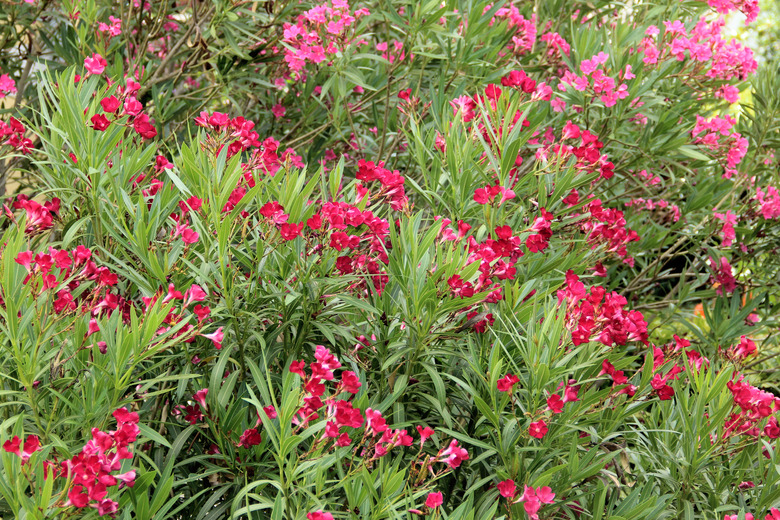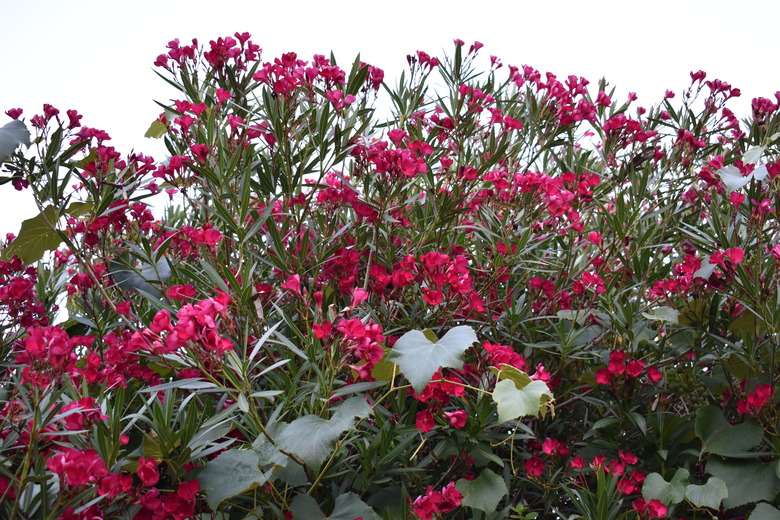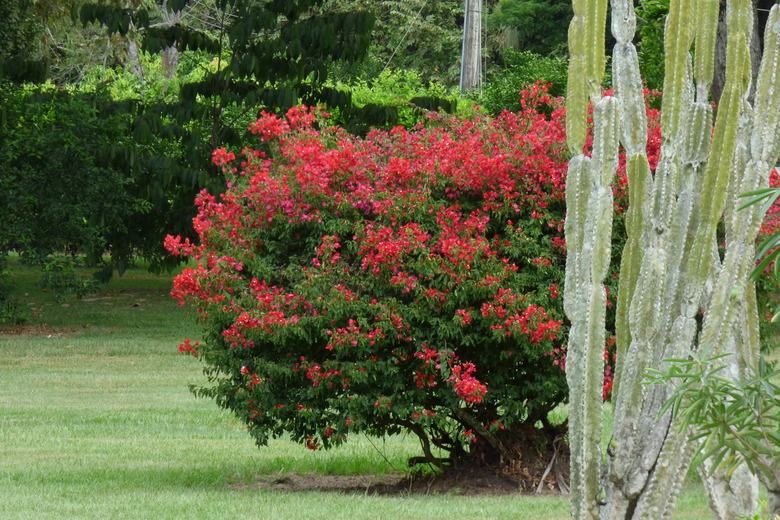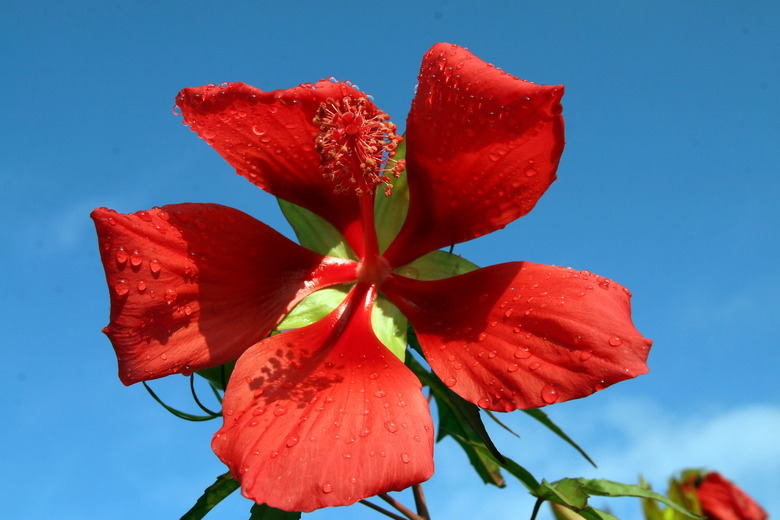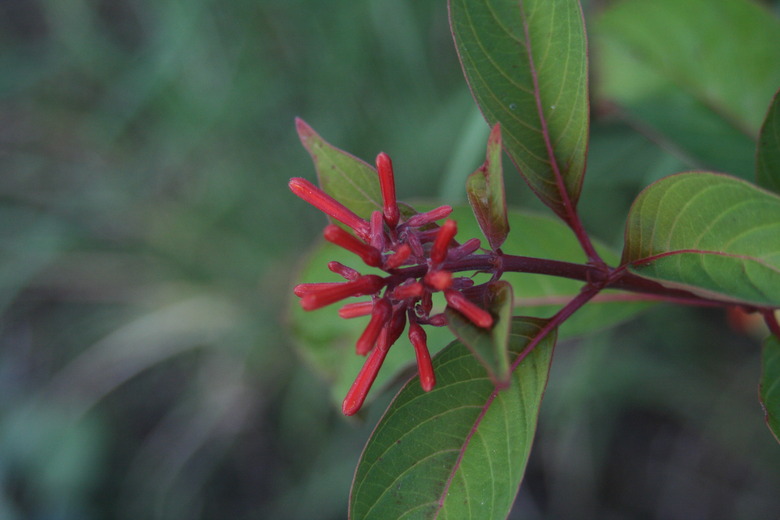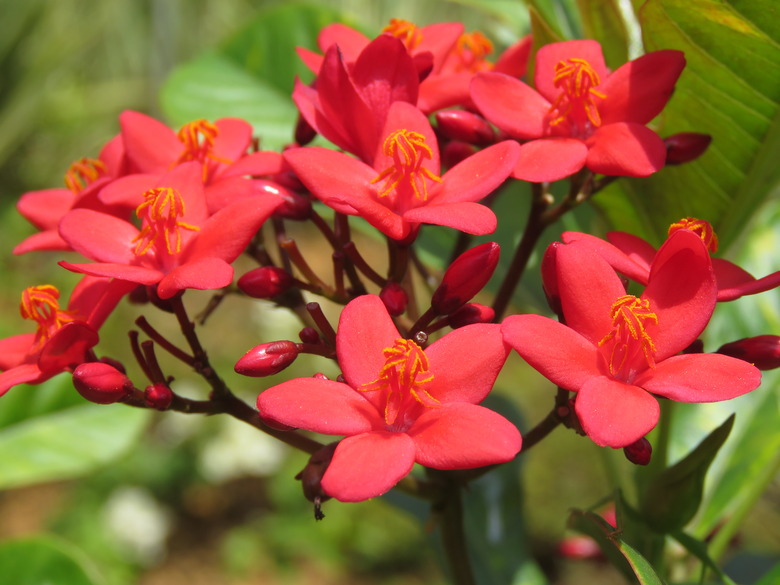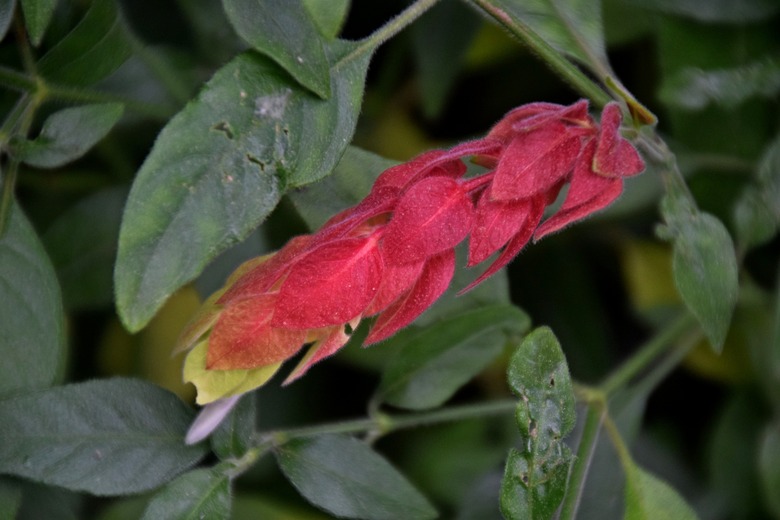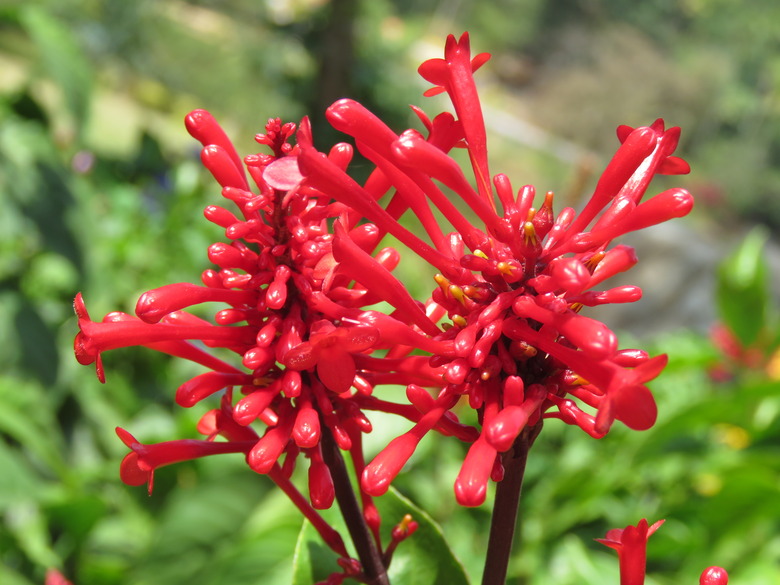Red Flowering Bushes In Florida
Red flower bushes in Florida evoke lush, tropical landscapes, but the state's plant hardiness zones encompass both tropical and subtropical climates suitable for a variety of shrubs.
When you go to the nursery to pick out plants for your Florida garden, keep in mind that some cultivars of the plant you're purchasing might not have red blooms. Read the tag or ask an expert if the color of the blossoms is important to you.
Florida Plant Hardiness Zones
The United States Department of Agriculture's (USDA) plant hardiness zones are based on a region's average low temperatures. This helps determine which plants survive the winter.
The University of Florida IFAS Extension notes that taking cold temperatures into consideration when choosing which flowering bushes to plant is important, but high humidity, hot summers and warm nights are not ideal for all plants rated to flourish in a particular zone.
Florida has seven of these zones. The northern part of the state, including the panhandle and the cities of Tallahassee and Pensacola, is in zones 8a and 8b. Zone 9a stretches across the state and up the eastern coast, from Citrus County on the Gulf of Mexico to Jacksonville on the Atlantic.
Encompassing much of the central part of the state, zone 9b includes the Tampa area and Orlando. Zones 10a, 10b and 11b stretch south from Fort Meyer to the tip of the Keys.
Classic Red Florida Bushes
Let's take a look at some of the classic red bushes found in Florida.
Oleander
Oleander (Nerium oleander) comes in a variety of colors ranging from white to dark red. The rapidly growing evergreen, native to Asia and Europe, can grow to 20 feet tall.
Oleander prefers well-drained soil in full sun to partial shade and thrives in most soil types. The bushes, hardy in zones 8b to 10, are ideal for a coastal garden since they tolerate salt. The Hardy Red, Emile Sahut and Blue-Blanc Re D cultivars have bright red flowers.
Note that all parts of the plant are poisonous, according to North Carolina Extension Gardener Plant Toolbox.
Bougainvillea
Bougainvillea (Bougainvillea glabra) is another favorite in the Southern garden that comes in a range of colors. Flame Red, San Diego Red and Scarlet O'Hara are among the cultivars with vivid red bracts, or modified leaves resembling flowers.
Bougainvillea enjoys a hot, dry climate and is drought-resistant. The North Carolina Extension Gardener notes that the climbing bush, hardy in zones 9a to 11b, attracts butterflies, bees and birds.
Hibiscus
Hummingbirds and butterflies are attracted to tropical hibiscus. Ranging in size from low-growing bushes to tree-like plants that grow up to 20 feet tall, hibiscus grows everywhere in Florida, though it may die back to the roots in the cooler northern part of the state. This red plant in south Florida almost blooms year-round.
Scarlet rosemallow (Hibiscus coccineus), one of the approximately 35 species of hibiscus with flowers that may be white, yellow, pink or red, has deep red flowers that bloom in late summer. According to Smithsonian Gardens, this native of Southeast Asia is Malaysia's national flower.
Less Common Blooming Red Bushes
Now let's take a look at some of the less common, but still quite lovely, red bushes that can be found in Florida.
Firebush
Firebush's (Hamelia patens) red flowers bloom from late spring until the first frost, attracting butterflies and hummingbirds to the garden.
In south Florida, the plant may grow to 15 feet tall and need to be pruned. But in northern Florida, it will probably die back during the winter and regrow from the roots in the spring. Plant firebush in well-drained soil in full sun.
Jatropha
Two species of Jatropha, a perennial bush with red flowers, thrive in central and south Florida. Jatropha integerrima, sometimes called firecracker or spicy Jatropha, has star-shaped red and occasionally pink flowers.
Jatropha multifidi, usually called coral plant, has flat, circular flowers and fan-shaped leaves. Both species are drought tolerant and low maintenance. The Missouri Botanical Garden warns that all parts of Jatropha are poisonous when ingested.
Shrimp Plant
Shrimp plant (Justicia brandegeeana) gets its name from the red bracts resembling shrimp surrounding a small white flower. The bushes rarely grow taller than 6 feet and can be planted throughout Florida, though they may die back in the northern part of the state and regrow in the spring.
Firespike
The 3-inch-long red tubular flowers of firespike (Odontonema cuspidatum) appear year-round in south Florida and during fall and winter in central and north Florida. This evergreen shrub tolerates most soil conditions and can be planted in part shade or in a sunny location, where it blooms prolifically.
